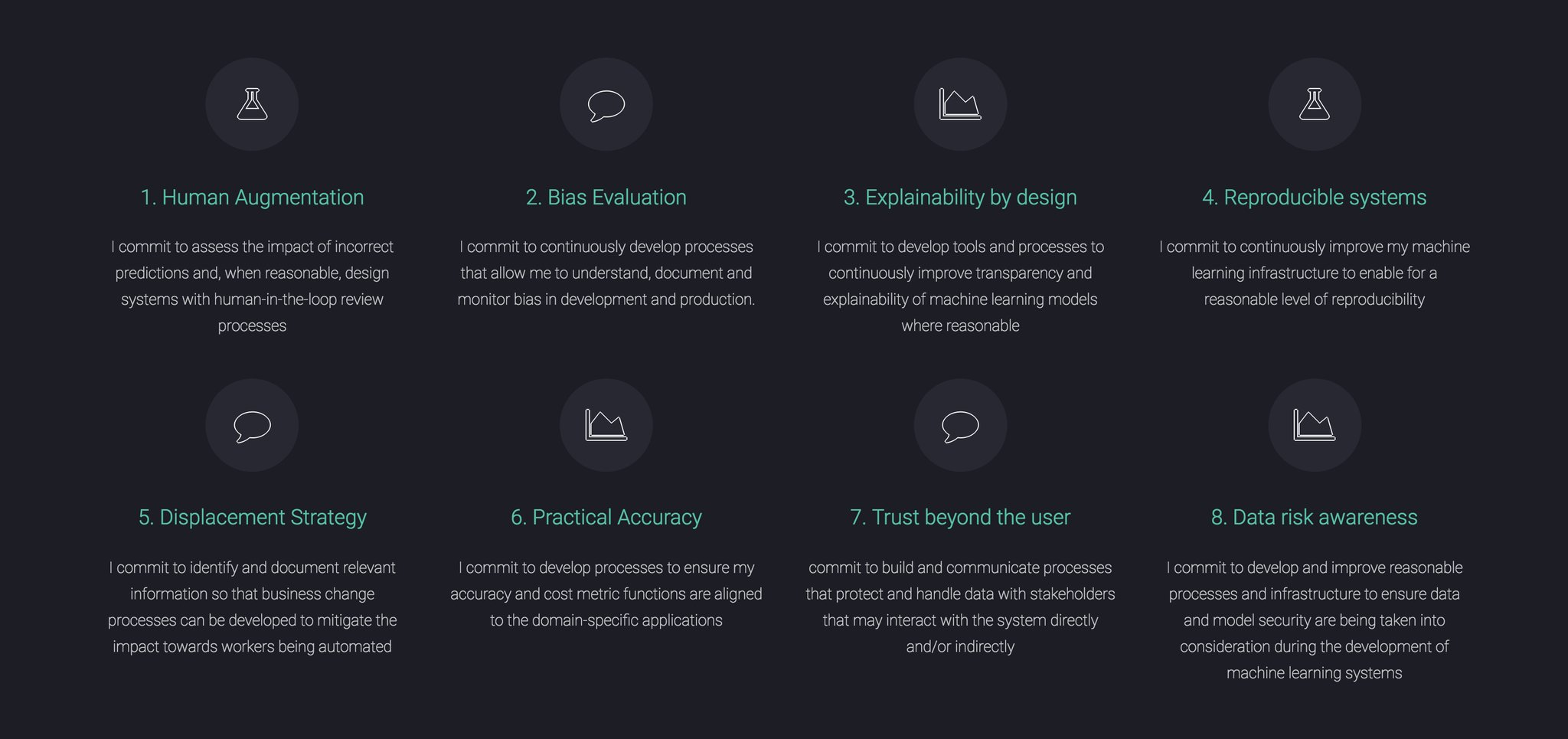Topic: Principles of Responsible AI
Key Terms
Responsible AI, transparency, accountability, governance
Guiding Questions
- What is meant by Responsible AI?
- What roles do transparency and accountability play in Responsible AI?
- How can we incorporate principles of Responsible AI into AI development?
To Read
"Responsible AI: A Guide to the Future" - Virginia Dignum
Read: Introduction + Chapter 3
Responsible Artificial Intelligence
Ethical Guidelines
To Watch
Student Facilitation
 Untitled for facilitation schedule
Untitled for facilitation schedule
Reading: Privacy and Freedom - Alan Westin
Read Chapter 2: “Privacy in the Modern Democratic State”
Summary: In this seminal work on privacy, Westin explores the societal and individual impacts of privacy violations. Students will discuss how these concepts apply to AI systems that handle personal data, and what measures can be taken to respect and protect user privacy.
Key Questions
- What are the key ethical considerations around AI and data privacy?
- How might different ethical theories (deontology, utilitarianism, virtue ethics, etc.) approach AI's impact on data privacy differently?
- How should AI systems be designed to respect user privacy?
- How do current laws and regulations address AI and data privacy, and what ethical considerations might they overlook?
- How does the trade-off between personalization (or utility) and privacy in AI systems present ethical challenges?
Journal / Group Work
Class Activity: Drafting a mock AI Law
Objective: We will engage in a practical application of their knowledge by drafting a new "law" that addresses the trade-off between personalization (or utility) and privacy in AI systems. This is your journal entry for today. Have one or two people in the group responsible for taking notes and writing out the “law” for your team. It should be about one page long. Everyone in the group will turn in the same document as part one of this week’s journal.
to do
- Research:
- Divide students into groups and assign each group one of the jurisdictions (US, UK, or EU) to focus on.
- Ask each group to research the current laws and regulations in their assigned jurisdiction that govern AI and data privacy. Here are some useful resources to start with:
- US: The Algorithmic Accountability Act and The Commercial Facial Recognition Privacy Act
- UK: The UK Centre for Data Ethics and Innovation's review of online targeting
- EU: EU's Ethics Guidelines for Trustworthy AI and EU's General Data Protection Regulation (GDPR)
- In this phase, each group should compile a summary of the main points of the laws/regulations they've researched and present them to the class.
- Drafting:
- Following the discussion, ask each group to imagine they have been tasked with drafting a new "law" that addresses the trade-off between personalization (or utility) and privacy in AI systems. Develop a specific use-case and write a law or guidelines (tenets) to guide developers and businesses.
- Deeply consider your tradeoffs (who benefits and who doesn’t?)
- Personalization vs. Privacy: More personalized AI services require more data, often personal, which may lead to privacy concerns. How much personal data should AI systems be allowed to collect in the name of personalization?
- Utility vs. Fairness: AI algorithms that optimize for utility or efficiency may inadvertently perpetuate societal biases, leading to unfair outcomes. How should the law balance the benefits of utility with the imperative for fairness?
- Innovation vs. Accountability: Strict regulations may slow down AI innovation, but lax regulations might not provide sufficient accountability for AI developers. How should the law strike a balance.
- Here’s how you can format your document (click the toggle arrow below). ⬇️
- Presentation Phase:
- After each group has completed their draft "law," present it to the class. We will ask questions and see if we can understand the law’s potential effects.
- We’ll Engage the class in a discussion about the strengths and weaknesses of each proposed "law," and what challenges might arise in implementing it.



